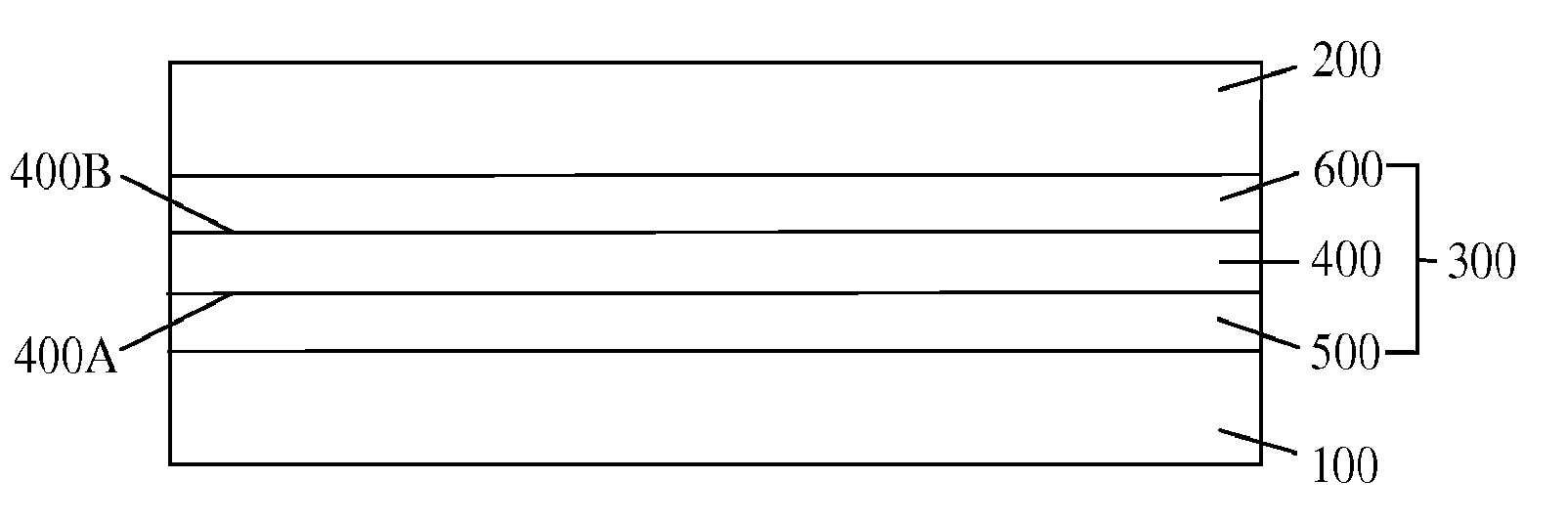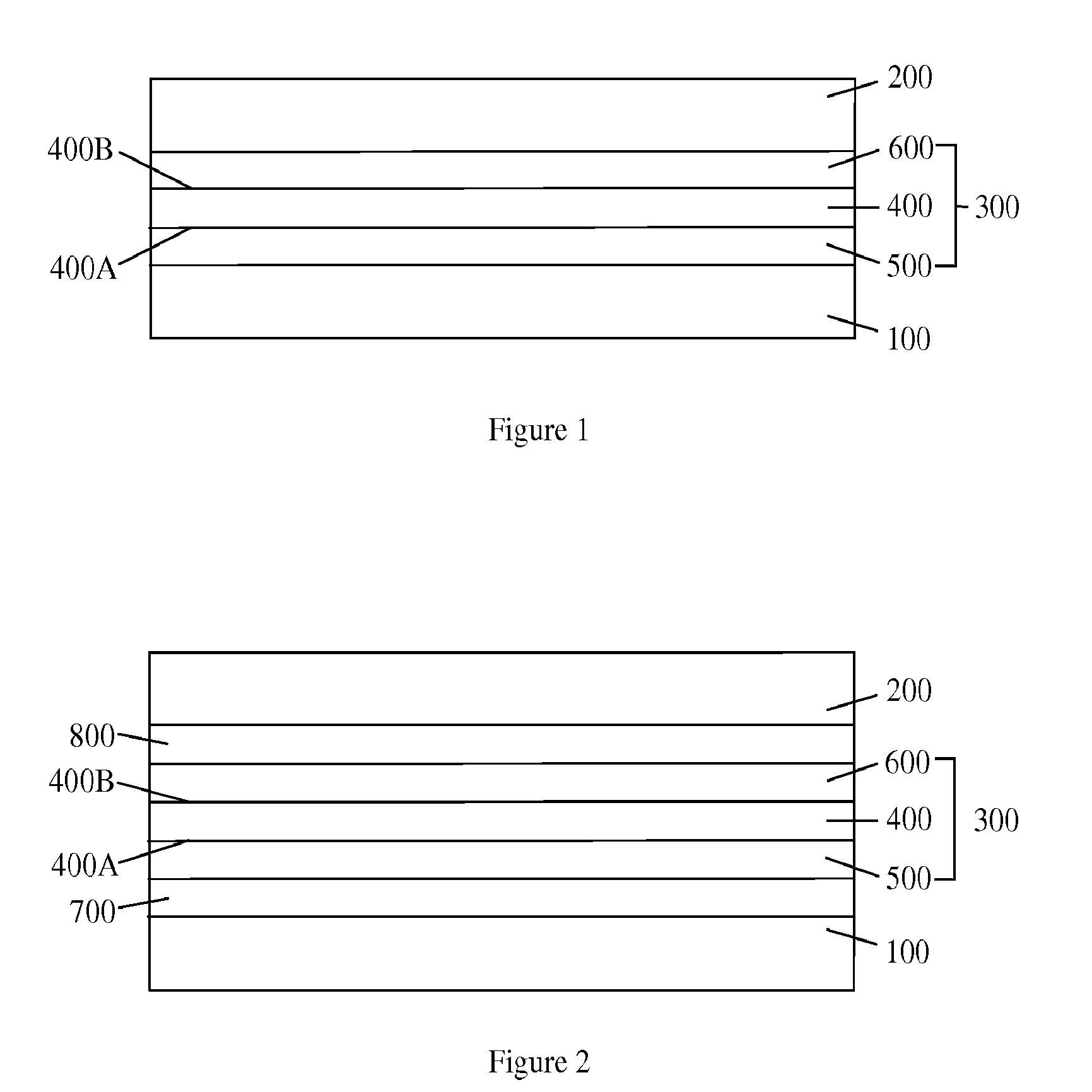Adhesive Tape and Laminated Glass
- Summary
- Abstract
- Description
- Claims
- Application Information
AI Technical Summary
Benefits of technology
Problems solved by technology
Method used
Image
Examples
example 1
[0102]The reinforced silicone resin films of Examples 4, 5, and 6 were prepared according to the following procedure: Silicone Composition A was applied on the release agent-treated surface of a Melinex® 516 PET film (8 in.×11 in.) to form a silicone film. Glass Fabric having the same dimensions as the PET film was carefully laid down on the silicone film, allowing sufficient time for the composition to thoroughly wet the fabric. The afore-mentioned silicone composition was then uniformly applied to the embedded fabric. An identical PET film was placed on top of the coating with the release agent-treated side in contact with the silicone composition. The laminate was heated in an oven at 150° C. for 30 min. The oven was turned off and the laminate was allowed to cool to room temperature inside the oven. The upper PET film was separated (peeled away) from the reinforced silicone resin film, and the silicone resin film was then separated from the lower PET film. The transparent reinfo...
example 2
[0104]Flat float glass plates (6 in.×6 in.×⅛ in.) were washed with a warm solution of detergent in water, thoroughly rinsed with deionized water, and dried in air. An edge dam was constructed around the perimeter of each glass plates using masking tape. Approximately 45 mL of STIXSO®RR sodium silicate solution was applied on one side of each glass plate. The coated glass plates were kept in a sealed glass chamber containing saturated calcium nitrate solution and having a relative humidity of 51% for a period of 76 h. The polysilicate coating on each glass plate had a water content of from 32 to 35% (w / w).
example 3
[0105]Two of the sodium polysilicate-coated glass plates prepared of Example 2 were removed from the humidity chamber. The reinforced silicone resin film of Example 1 having the same dimensions as the glass plates was placed on the coated surface of one of the glass plates, and the coated surface of the other glass plate was then placed on the exposed surface of the reinforced silicone resin film. An 8-lb steel block was placed on the composite, which was then heated in an oven at a rate of 5° C. / min. to 130° C. The composite was maintained at this temperature for 1 h. The oven was turned off and the laminated glass was allowed to cool to room temperature inside the oven.
PUM
| Property | Measurement | Unit |
|---|---|---|
| Fraction | aaaaa | aaaaa |
| Fraction | aaaaa | aaaaa |
| Fraction | aaaaa | aaaaa |
Abstract
Description
Claims
Application Information
 Login to View More
Login to View More - R&D
- Intellectual Property
- Life Sciences
- Materials
- Tech Scout
- Unparalleled Data Quality
- Higher Quality Content
- 60% Fewer Hallucinations
Browse by: Latest US Patents, China's latest patents, Technical Efficacy Thesaurus, Application Domain, Technology Topic, Popular Technical Reports.
© 2025 PatSnap. All rights reserved.Legal|Privacy policy|Modern Slavery Act Transparency Statement|Sitemap|About US| Contact US: help@patsnap.com


